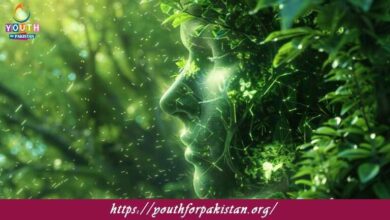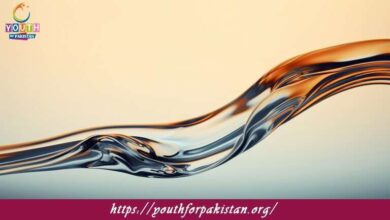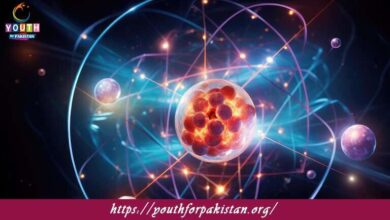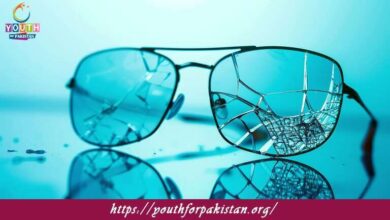11th Class Biology Chapter 14 MCQs with Answers
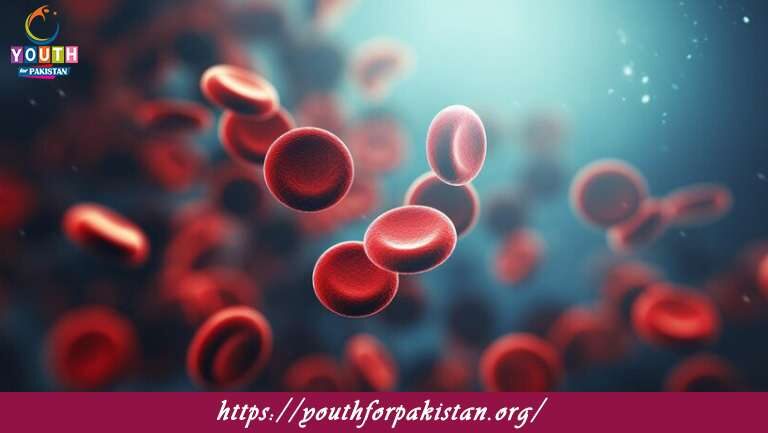
Discover key concepts with Transport MCQs focused on circulatory systems, xylem, phloem, and transportation in plants and animals. These Chapter 14 quizzes make learning effective for 11th Class Biology students.
Which of the following is responsible for transporting oxygen in the human body?
a) Hemoglobin
b) Insulin
c) Glucagon
d) Albumin
The process by which water and minerals are absorbed from the soil into the roots of a plant is called .
a) Transpiration
b) Photosynthesis
c) Osmosis
d) Absorption
Which blood vessels carry blood away from the heart?
a) Veins
b) Capillaries
c) Arteries
d) Venules
The main nitrogenous waste product in humans, excreted by the kidneys, is .
a) Urea
b) Carbon dioxide
c) Ammonia
d) Glucose
Which of the following is responsible for transporting sugars and other organic compounds in plants?
a) Xylem
b) Phloem
c) Stomata
d) Epidermis
Which component of blood is responsible for clotting to prevent excessive bleeding?
a) Platelets
b) Red blood cells
c) White blood cells
d) Plasma
The movement of substances from an area of higher concentration to an area of lower concentration is called .
a) Osmosis
b) Diffusion
c) Active transport
d) Filtration
In which part of the human digestive system are most nutrients and water absorbed into the bloodstream?
a) Stomach
b) Small intestine
c) Large intestine
d) Esophagus
Which of the following is a hormone responsible for regulating blood sugar levels in the body?
a) Estrogen
b) Testosterone
c) Insulin
d) Thyroxine
The process by which plants lose water in the form of water vapor through tiny openings on their leaves is called .
a) Transpiration
b) Respiration
c) Photosynthesis
d) Evaporation
Which of the following blood vessels have the thinnest walls and are involved in the exchange of nutrients and gases between the blood and body tissues?
a) Arteries
b) Capillaries
c) Veins
d) Venules
The liquid part of the blood that contains various substances like proteins, ions, and hormones is called .
a) Hemoglobin
b) Plasma
c) Serum
d) Lymph
In which of the following blood vessels does oxygen-rich blood flow?
a) Arteries
b) Capillaries
c) Veins
d) Venules
The process by which plants use sunlight to convert carbon dioxide and water into glucose and oxygen is called .
a) Transpiration
b) Respiration
c) Photosynthesis
d) Evaporation
Which blood cells are responsible for the body’s immune response and fighting infections?
a) Platelets
b) Red blood cells
c) White blood cells
d) Plasma cells
Which of the following organs is responsible for filtering waste products from the blood and producing urine?
a) Liver
b) Kidneys
c) Lungs
d) Heart
The process of taking in oxygen and releasing carbon dioxide during cellular respiration is called .
a) Transpiration
b) Photosynthesis
c) Osmosis
d) Respiration
Which of the following is a hormone produced by the adrenal glands that helps the body respond to stress?
a) Cortisol
b) Insulin
c) Estrogen
d) Testosterone
The structure in plants that transports water and minerals from the roots to the leaves is called .
a) Xylem
b) Phloem
c) Stomata
d) Epidermis
The process of the breakdown of food into smaller, absorbable components in the digestive system is called .
a) Respiration
b) Photosynthesis
c) Digestion
d) Transpiration
Which blood vessels carry blood back to the heart?
a) Arteries
b) Capillaries
c) Veins
d) Venules
Which of the following is the main component of the cell membrane that regulates the movement of substances into and out of the cell?
a) Protein
b) Carbohydrate
c) Lipid
d) Nucleic acid
The hormone responsible for increasing blood sugar levels in the body is .
a) Insulin
b) Glucagon
c) Estrogen
d) Testosterone
Which of the following is a waste product produced by muscle cells during strenuous exercise?
a) Carbon dioxide
b) Urea
c) Lactic acid
d) Glucose
The process by which water moves from an area of lower solute concentration to an area of higher solute concentration through a semipermeable membrane is called .
a) Osmosis
b) Diffusion
c) Active transport
d) Filtration
The process by which the body breaks down food into simpler substances that can be absorbed and used for energy is called .
a) Transpiration
b) Photosynthesis
c) Digestion
d) Evaporation
Which of the following is the smallest unit of a living organism capable of carrying out life functions?
a) Cell
b) Tissue
c) Organ
d) Organism
The main function of red blood cells is to .
a) Carry oxygen
b) Fight infections
c) Clot blood
d) Carry nutrients
The process by which water and dissolved substances are forced out of the blood and into the nephrons of the kidneys is called
a) Secretion
b) Absorption
c) Filtration
d) Excretion
The human circulatory system is also known as the .
a) Lymphatic system
b) Nervous system
c) Respiratory system
d) Cardiovascular system
Which of the following hormones regulates the concentration of glucose in the blood?
a) Insulin
b) Glucagon
c) Testosterone
d) Estrogen
The process by which oxygen and nutrients are exchanged for carbon dioxide and waste products between the blood and body tissues is called .
a) Respiration
b) Transpiration
c) Osmosis
d) Diffusion
Which of the following is a hormone produced by the pancreas to regulate blood sugar levels?
a) Insulin
b) Glucagon
c) Thyroxine
d) Cortisol
The process by which substances are moved across the cell membrane with the help of energy is called .
a) Osmosis
b) Diffusion
c) Active transport
d) Filtration
The large blood vessel that carries oxygenated blood from the lungs to the heart is called
a) Pulmonary artery
b) Pulmonary vein
c) Aorta
d) Vena cava
The process of blood cell formation that occurs in the bone marrow is called .
a) Hematopoiesis
b) Hemostasis
c) Hemolysis
d) Hemodialysis
Which of the following is the site of gas exchange in the respiratory system?
a) Trachea
b) Bronchi
c) Alveoli
d) Larynx
The process by which waste products are removed from the body is called .
a) Respiration
b) Transpiration
c) Osmosis
d) Excretion
The hormone responsible for regulating the body’s metabolism is .
a) Insulin
b) Glucagon
c) Thyroxine
d) Cortisol
Which of the following is a waste product excreted by the lungs during respiration?
a) Urea
b) Carbon dioxide
c) Glucose
d) Lactic acid
The process by which plants absorb water and minerals from the soil is called
a) Transpiration
b) Photosynthesis
c) Osmosis
d) Absorption
Which of the following blood vessels carries oxygen-poor blood from the body back to the heart?
a) Arteries
b) Capillaries
c) Veins
d) Venules
The process by which plants release oxygen into the atmosphere as a byproduct of photosynthesis is called .
a) Transpiration
b) Respiration
c) Osmosis
d) Photosynthesis
The hormone responsible for lowering blood sugar levels in the body is .
a) Insulin
b) Glucagon
c) Estrogen
d) Testosterone
Which of the following is the process by which water and dissolved substances are reabsorbed from the nephrons back into the blood in the kidneys?
a) Secretion
b) Absorption
c) Filtration
d) Excretion
The process by which oxygen is transported from the lungs to body tissues and carbon dioxide is transported from body tissues to the lungs is called .
a) Respiration
b) Transpiration
c) Osmosis
d) Diffusion
Which of the following is the process by which substances move against the concentration gradient with the help of energy?
a) Osmosis
b) Diffusion
c) Active transport
d) Filtration
The hormone responsible for increasing blood sugar levels in times of low glucose levels is
a) Insulin
b) Glucagon
c) Estrogen
d) Testosterone
The process by which waste products are removed from the body through sweat is called
a) Respiration
b) Transpiration
c) Osmosis
d) Perspiration
Which of the following is a hormone produced by the ovaries that plays a role in the menstrual cycle and pregnancy?
a) Insulin
b) Glucagon
c) Estrogen
d) Testosterone
The process by which substances move from an area of higher concentration to an area of lower concentration without the use of energy is called .
a) Osmosis
b) Diffusion
c) Active transport
d) Filtration
Which of the following is the main component of plant cell walls that provides structural support?
a) Protein
b) Carbohydrate
c) Lipid
d) Cellulose
The process by which water moves from an area of higher solute concentration to an area of lower solute concentration through a semipermeable membrane is called .
a) Osmosis
b) Diffusion
c) Active transport
d) Filtration
Which of the following is a hormone produced by the testes that plays a role in male sexual development and reproductive function?
a) Insulin
b) Glucagon
c) Estrogen
d) Testosterone
The process by which plants lose water in the form of water vapor through tiny openings on their leaves is called .
a) Transpiration
b) Respiration
c) Photosynthesis
d) Evaporation
The main nitrogenous waste product excreted by birds and reptiles is .
a) Urea
b) Carbon dioxide
c) Ammonia
d) Glucose
Which of the following is the smallest blood vessel that connects arterioles and venules and is involved in the exchange of nutrients and gases?
a) Arteries
b) Capillaries
c) Veins
d) Venules
The hormone responsible for regulating calcium levels in the blood is .
a) Insulin
b) Glucagon
c) Estrogen
d) Parathyroid hormone
The process by which substances move from an area of lower concentration to an area of higher concentration with the use of energy is called .
a) Osmosis
b) Diffusion
c) Active transport
d) Filtration
Which of the following is the largest blood vessel in the human body that carries oxygenated blood from the heart to the rest of the body?
a) Pulmonary artery
b) Pulmonary vein
c) Aorta
d) Vena cava
If you are interested to enhance your knowledge regarding Physics, Chemistry, Biology, and Computer please click on the link of each category, you will be redirected to dedicated website for each category.


